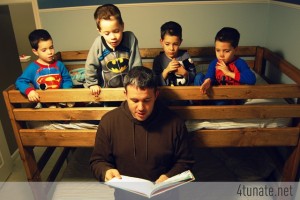Children crave structure in their lives; it’s how they learn. They thrive on routine: as they are growing, routine lets them anticipate and understand what happens next. Change from regular routine and structure can make kids feel anxious and that they are subject to arbitrary events. Yet change is an integral part of life.
Surprisingly, structure and routine in the safest of environments – home – is what can best help children adjust to change and to new things, because they learn to handle change better in the milieu of a familiar routine.
As a pediatrician, one of the questions parents ask me most frequently about is establishing a bedtime routine.
 Bedtime routines can – and should – vary from family to family (and from parenting personality to parenting personality.) The important thing is that they are predictable and that they are simple, caring, calming, and consistent.
Bedtime routines can – and should – vary from family to family (and from parenting personality to parenting personality.) The important thing is that they are predictable and that they are simple, caring, calming, and consistent.
When my own two girls were young, I would tell them a story each night at bedtime – that I would make up on the spot – about two boys named Ted and Lester. Most of the stories incorporated things that had happened during the day or specific ideas I wanted to convey. Ted was always the mischievous one and Lester was a “by the book” kind of young man. Today my daughters can still happily regale you with their favorite Ted & Lester adventures!
One of the families I saw in my practice created a fairly unique – and counter-intuitive – bedtime routine for their three energetic sons. Every night before they climbed into bed, their Dad, an ex-Marine who relished discipline in his own life, would tell them “drop down and give me 10!” Even as toddlers, his three sons were happy to do tiny pushups. And as his kids grew older and started participated in sports, they voluntarily started doing 50 pushups before bed, saying it actually took they edge off their day and made them sleepy.
And I love Jennifer Murray’s solution for bedtime stories with quadruplets: the top of a bunk bed gives them all “balcony views” and prevents squirming and fighting for position!
Structure does not need to be cookie-cutter or restrictive, suffocating or overwhelming. It’s not designed to be punitive in nature – even when it’s pushups! – but instead to creates a safe and predictable environment. With structure, expectations are more clearly set. A parent is not being the “bad guy” but is instead enforcing “what we do as a family.”
Routine coupled with consistency, makes every family’s life calmer and permits us to connect more with our children and interact with them in a positive manner. So create some practices that suit your own Parenting Personality and your childrens’ temperaments and build them into a bedtime routine. If you carry them out with love and respect, you’ll find they soon turn into cherished memories!

 Dr. Michael Howard
Dr. Michael Howard